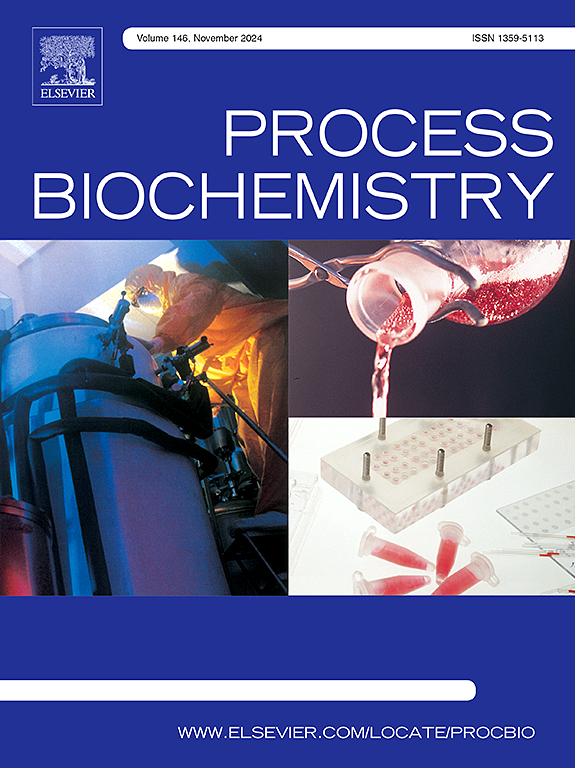Optimization of the production of a lipase from Staphylococcus pasteuri and its immobilization/stabilization on a hydrophobic support
IF 3.7
3区 生物学
Q2 BIOCHEMISTRY & MOLECULAR BIOLOGY
引用次数: 0
Abstract
The production of an extracellular lipase from the Staphylococcus pasteuri 3''- 42 strain was optimized using a design of experiments methodology. Firstly, the Plackett-Burman Design revealed that olive oil, meat extract, and ammonium sulfate had the strongest positive influence on lipase production among 15 tested variables. Next, a three-level Central Composite Design resulted in a validated model with a p-value < 0.001 and an R² of 0.983. Under optimal conditions—1.32 % (v/v) olive oil, 0.92 % (w/v) meat extract, 0.5 % (w/v) ammonium sulfate, and a 5.08 % (v/v) inoculum size—the lipase activity increased threefold, reaching 31.26 U/mL after 16 hours. The semi-purified lipase was immobilized by adsorption on a hydrophobic support via interfacial activation. Initially, the immobilization yield was quite poor, and this was explained by the formation of lipase aggregates. However, 100 % of the lipase activity was immobilized in 30 minutes when adding 3 M guanidine, with 95 % recovery of activity. The immobilized lipase showed higher activity and stability in the presence of organic solvents than the free enzyme.

巴氏葡萄球菌脂肪酶的优化生产及其在疏水载体上的固定化/稳定化
利用实验方法设计优化了巴氏葡萄球菌3”- 42菌株胞外脂肪酶的生产。首先,Plackett-Burman设计表明,在15个测试变量中,橄榄油、肉提取物和硫酸铵对脂肪酶产量的正向影响最大。接下来,一个三水平的中心复合设计产生了一个具有p值<;R²为0.983。在1.32 % (v/v)橄榄油、0.92 % (w/v)肉提取物、0.5 % (w/v)硫酸铵和5.08 % (v/v)接种量的最佳条件下,16 h后脂肪酶活性提高了3倍,达到31.26 U/mL。半纯化脂肪酶通过界面活化在疏水载体上吸附固定。最初,固定化产率很低,这是由脂肪酶聚集物的形成来解释的。然而,当添加3 M胍时,100 %的脂肪酶活性在30 分钟内固定,活性恢复95 %。固定化脂肪酶在有机溶剂存在下比游离酶表现出更高的活性和稳定性。
本文章由计算机程序翻译,如有差异,请以英文原文为准。
求助全文
约1分钟内获得全文
求助全文
来源期刊

Process Biochemistry
生物-工程:化工
CiteScore
8.30
自引率
4.50%
发文量
374
审稿时长
53 days
期刊介绍:
Process Biochemistry is an application-orientated research journal devoted to reporting advances with originality and novelty, in the science and technology of the processes involving bioactive molecules and living organisms. These processes concern the production of useful metabolites or materials, or the removal of toxic compounds using tools and methods of current biology and engineering. Its main areas of interest include novel bioprocesses and enabling technologies (such as nanobiotechnology, tissue engineering, directed evolution, metabolic engineering, systems biology, and synthetic biology) applicable in food (nutraceutical), healthcare (medical, pharmaceutical, cosmetic), energy (biofuels), environmental, and biorefinery industries and their underlying biological and engineering principles.
 求助内容:
求助内容: 应助结果提醒方式:
应助结果提醒方式:


